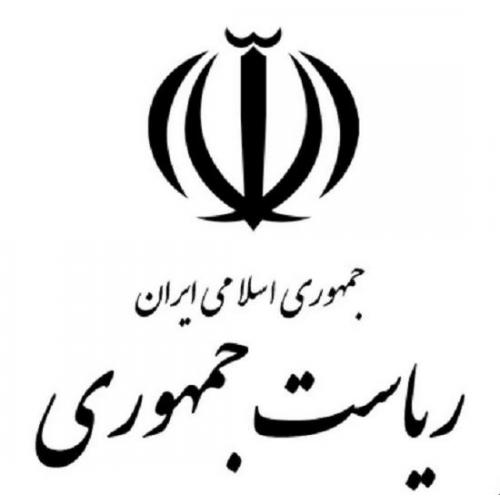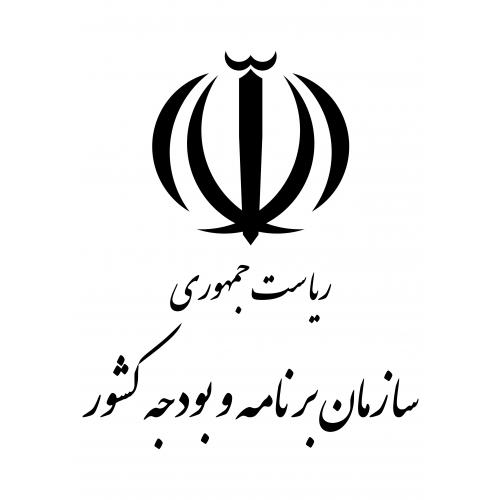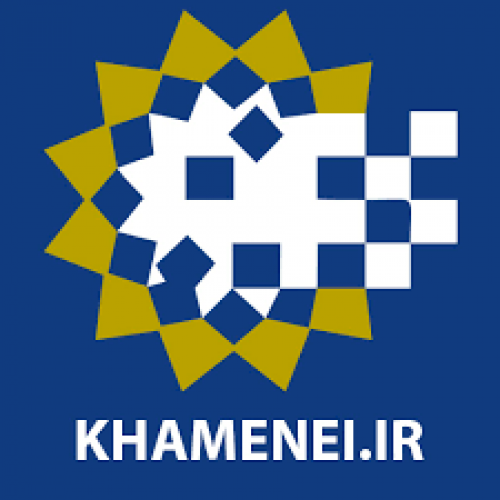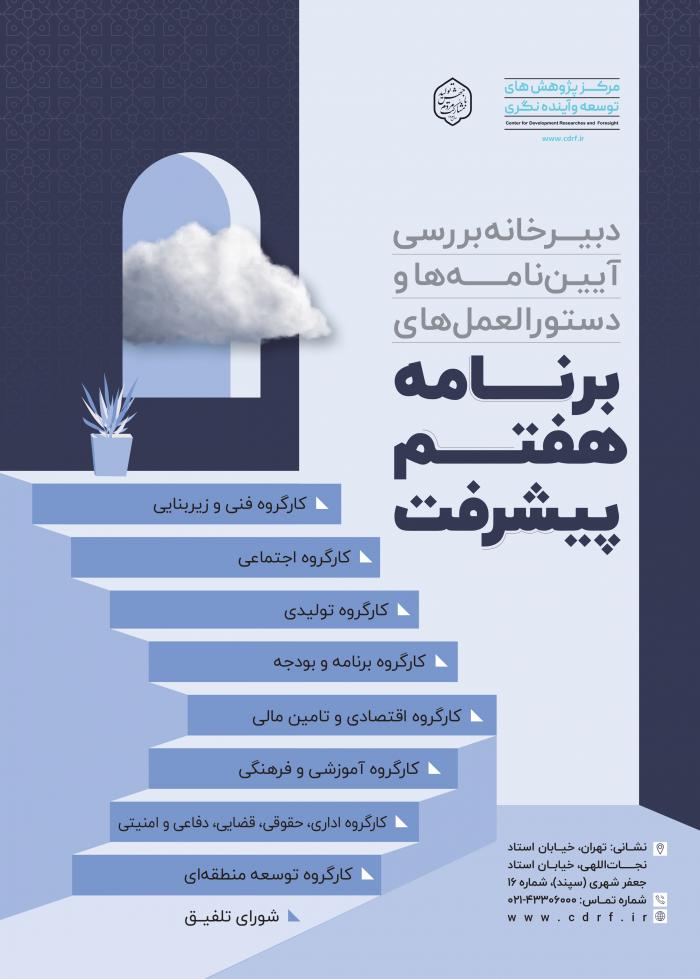
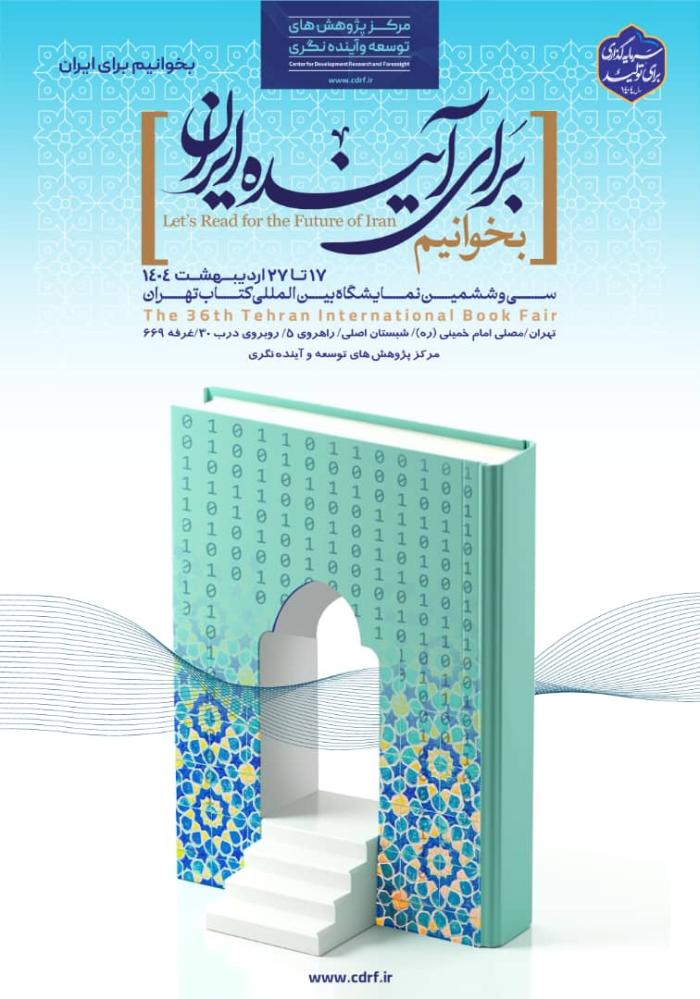
-
بررسی آییننامهها و دستورالعملهای برنامه هفتم پیشرفت
-
بررسی عوامل موثر بر افزایش تصادفات و تلفات جادهای و سوانح رانندگی و دادهکاوی تلفات انسانی
-
سازماندهی و بازآرایی فضایی آموزش عالی کشور
-
به روز رسانی سند ملی آمایش سرزمین
-
انجام مطالعات مناطق آزاد به عنوان نواحی پیشران اقتصادی کشور
-
اصلاح ساختار بودجه و پیاده سازی نظام یکپارچه مدیریت اطلاعات مالی دولت (IFMIS)
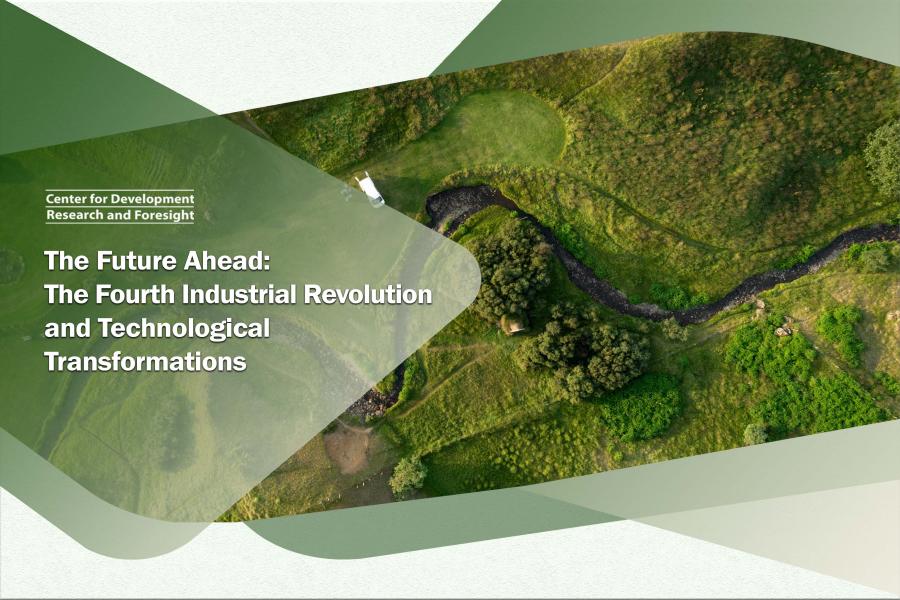
The main objective of this research is to examine and analyze the overall strategic direction of technological developments and to provide an overview of the Fourth Industrial Revolution and the effects of technological developments in selected areas (with an emphasis on the space organization). These selected areas include transportation, jobs, production, water, and agriculture. Each of these areas has a significant impact on the space organization, and understanding their future prospects can provide valuable guidance for policymakers and decision-makers. Additionally, the strengths, weaknesses, opportunities, and threats of the innovation system and the status of technology in Iran and neighboring countries have also been investigated.
The specific objectives of this research are as follows:
- To explore the concept of the Fourth Industrial Revolution, its dimensions, and its impact on various domains.
- To investigate the impact of technological developments on the future transportation.
- To examine the impact of technological developments on the future jobs.
- To investigate the impact of technological developments on the future production.
- To examine the relationship between technological developments and the water shortage.
- To assess the impact of technological developments on the future agriculture.
- To provide an overview of the current state of science, innovation, and technology in the country.
Various scenarios for the future jobs are presented in this research. Additionally, the following questions have been addressed:
- Assuming that the existing economic, political, and social systems are maintained, along with the continuous advancement, integration, and global reach of technology, what percentage of the current workforce do you expect to face unemployment in 2020, 2030, 2040, and 2050?
- In the age of industry and communication, more jobs were created than replaced. Many believe that the speed, integration, and globalization of technological changes in the next 35 years will lead to widespread structural unemployment. What technologies or factors may support or challenge this claim?
- What questions need to be answered to determine whether artificial intelligence and other future technologies will create more jobs or not compared to the jobs they eliminate?
- How effective can these measures be in creating new jobs or income to address technological unemployment until 2050?
- Will wealth generated by artificial intelligence and other technologies continue to accumulate income for the wealthy and increase income inequality?
- How important is it to establish a form of guaranteed income to end poverty, reduce inequality, and mitigate technology-induced unemployment?
- Do you expect living costs to decrease by 2050? (Due to the future artificial intelligence, robotics, nanoscale manufacturing, 3D and 4D printing, future internet services, and other future production and distribution systems)
- What major changes can have a significant impact on everything by 2050?
- What scenarios should be written to describe the cause-and-effect relationships and important decision-making processes between the present and 2050 that need to be considered now?
Technology and the methods of utilizing tools have always played a significant role in the transformations of human life. Sometimes, technological advancements have such an impact on human life that some sociologists classify the history of humanity based on the type of tools it has produced. However, the technological revolution is a movement that has brought about profound changes in the world from two centuries ago until now. The industrialization process, urbanization, increased production, expansion of communication devices, and so on, are just external manifestations or visible phenomena of the industrial revolution. Family, religious, literature, art, political ideologies, and more have all undergone profound and rapid transformations in a short period of time. The technological revolution continues to transform rural communities, erode ancient traditional cultures, and open up avenues for economic, social, and political development for countries. The technological revolution has greatly accelerated the pace of global transformations, and these changes are tangible in our daily lives. The world has become so interconnected and interdependent that any technological, political, social, or economic changes can have a global impact. The fabric of the world is intricately woven together, and in each thread of it, technological, political, social, or economic changes can cause excessive effect on a global scale.
The Fourth Industrial Revolution has presented both challenges and extensive opportunities for societies, including Iranian society. Among the opportunities are increased income levels, improved quality of life, and reduced costs in supply, commerce, and trade. However, some of the challenges include greater inequality and reduced demand for low-skilled labor. All of these factors underscore the need for attention to technology foresight, predictive scenarios, and the economic, social, political, and cultural impacts of technology.
To confront economic and social changes, science and technology systems must be capable of responding and adapting either by aligning current technologies or creating and deploying new ones. The value of technology foresight is that it provides a structured opportunity to look to the future and examine the role of science and technology in that. Technology foresight is a response to conflicts arising from prioritization, conflicts that are created through gradual increases in experimentation costs, limited resources, scientific decision-making complexity, and various pressures to achieve real value for money while considering economic and social aspects. Technology foresight provides a systematic mechanism at least in its foundations and principles to overcome complexities and interdependencies of decisions. Technology foresight accomplishes this action through long-term decision-making regarding research, especially facilitating the policy-making process when activity coherence and coordination are vital across multiple sectors.
Foresight has been widely used as a policy support tool since the early 1990s, especially in the fields of science, technology, and innovation. Various efforts have been made to establish a link between foresight and policymaking. The main rationale for conducting foresight and policymaking in science, technology, and innovation at national, regional, and global levels is to achieve policy objectives by addressing major social challenges. One of the most important objectives for addressing these challenges is to enhance the competitiveness of the national economy through means such as scientific and technological innovations. Determining the direction of research processes, securing funding, prioritizing resources, and exchanging or creating visions are all evident reasons for engaging in foresight activities. Besides funding activities, Georgiou and Keenan have proposed a list of common foresight goals based on their understanding of evolutionary economics and national innovation systems.
- Identifying future opportunities to prioritize investment in science and innovation;
- Changing the trajectory of the science and innovation system (which is related to prioritization but is a further step);
- Steering innovation systems;
- Involving new actors in strategic debates;
- Establishing new networks and links between fields, sectors, and markets with their surrounding challenges.

